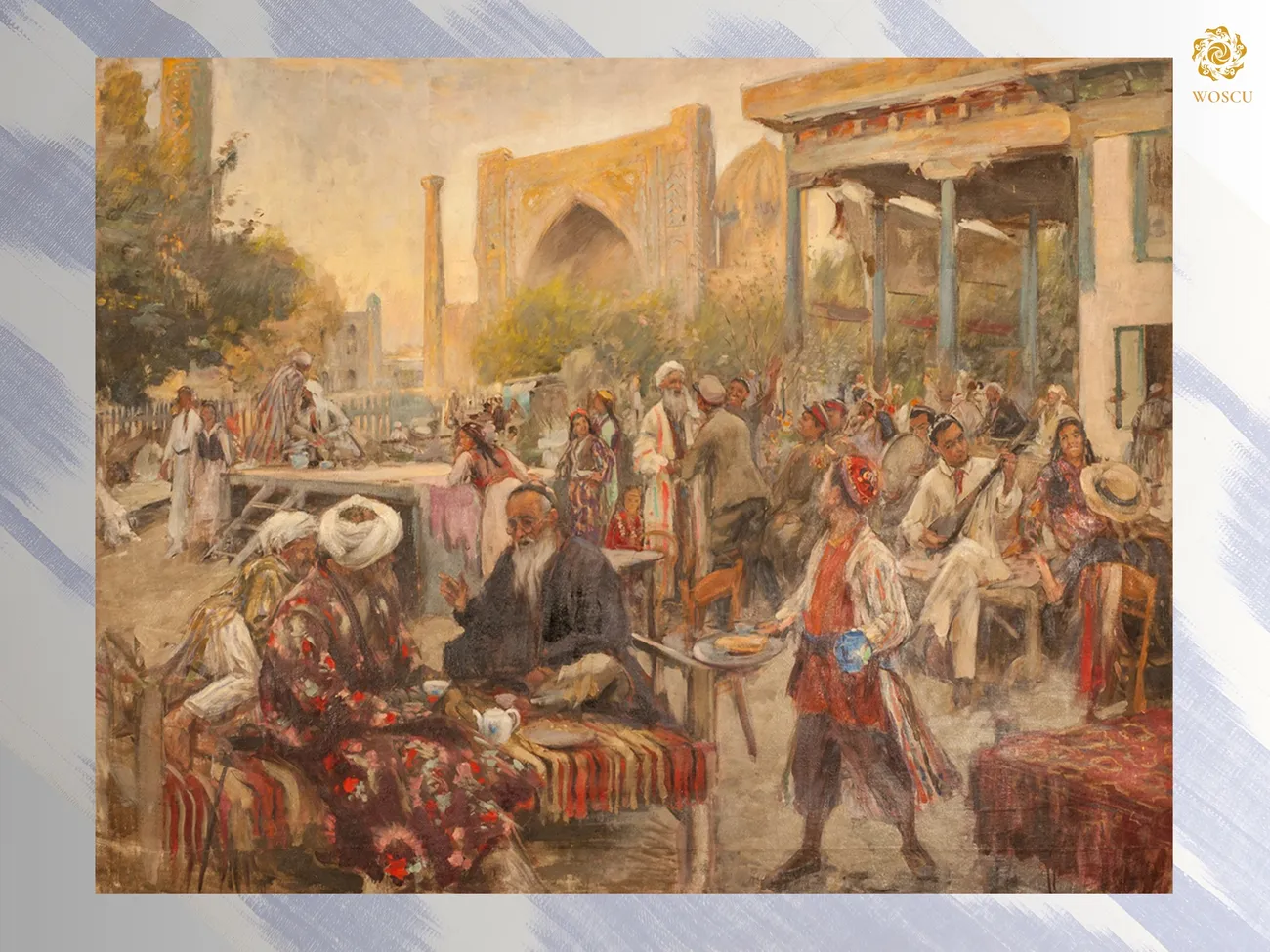
This is where people gathered to listen to good singing and music, which is why owners of tea houses exerted a lot of effort to hire famous singers and musicians. Many well-known Uzbek and Tajik musicians began their artistic career performing in tea houses. The invention of gramophones and vinyl records, along with their rapid adoption by tea house owners, did not put an end to live performances.
Just as before, musicians traveled a great deal, looking for better payment and conditions for their creativity to thrive. Starting in the 16th century and continuing in the following centuries, musicians began to migrate from Central Asia (especially Bukhara and Samarkand) to India and the courts of the Great Mughals (Baburids). This region had favorable conditions for musical artists, and its atmosphere was on the whole democratic and tolerant to different faiths. Due to the cultural and musical connections between Central Asia and India, fascinating new communities emerged in both professional music and the scientific study of music. One new phenomenon in particular in the scientific treatises on music created in Northern India, including those written by people from Central Asia, is the tradition of a parallel comparison of two main systems of musical art – maqom and raga. Kashmir developed its own musical tradition called Sufyana musiqi or Sufyana kalam, which in a number of ways is closely related to Bukhara Shashmaqom.
For Central Asia, the late Middle Ages was when its own highly complex genres and types of classical music were predominately formed, primarily maqomat, which was separate from the general civilizational model of Islamic musical culture. Maqomat, represented by various local traditions (from Bukhara, Samarkand, Ferghana, Tashkent and Khorezm), is recognized and perceived as an independent regional (Central Asian) musical style. On the one hand, it preserves connections with the previous all-Muslim system of maqamat, and on the other, firmly relies on the traditions of the folk music of the Uzbeks and Tajiks, as well as other Central Asian peoples.
You can learn more about the topic in the book-album "The Musical Legacy of Uzbekistan in Collections of the Russian Federation" (Volume VI) from the series "Cultural legacy of Uzbekistan in the world collections".
The general sponsor of the project is the oilfield services company Eriell-Group.
